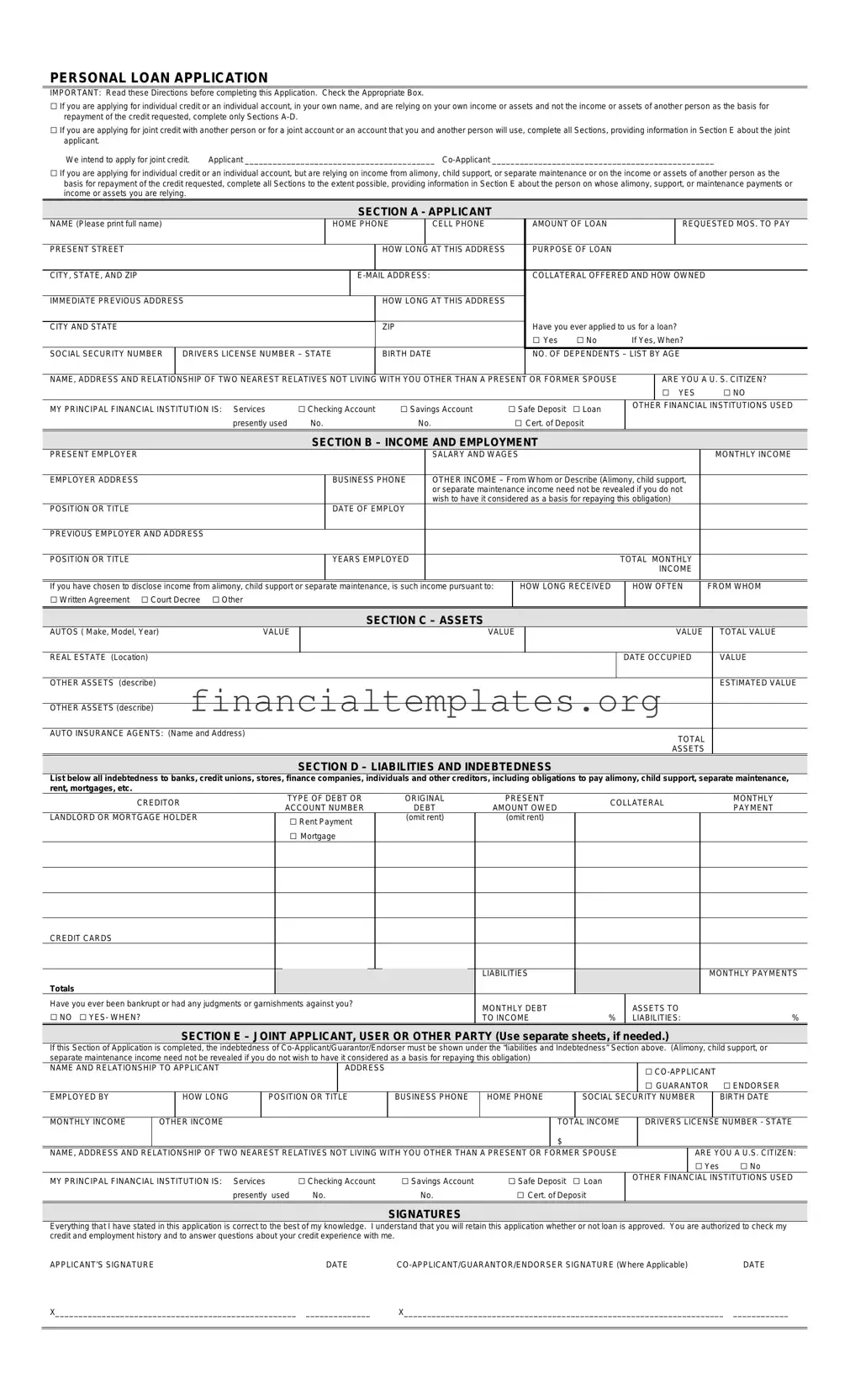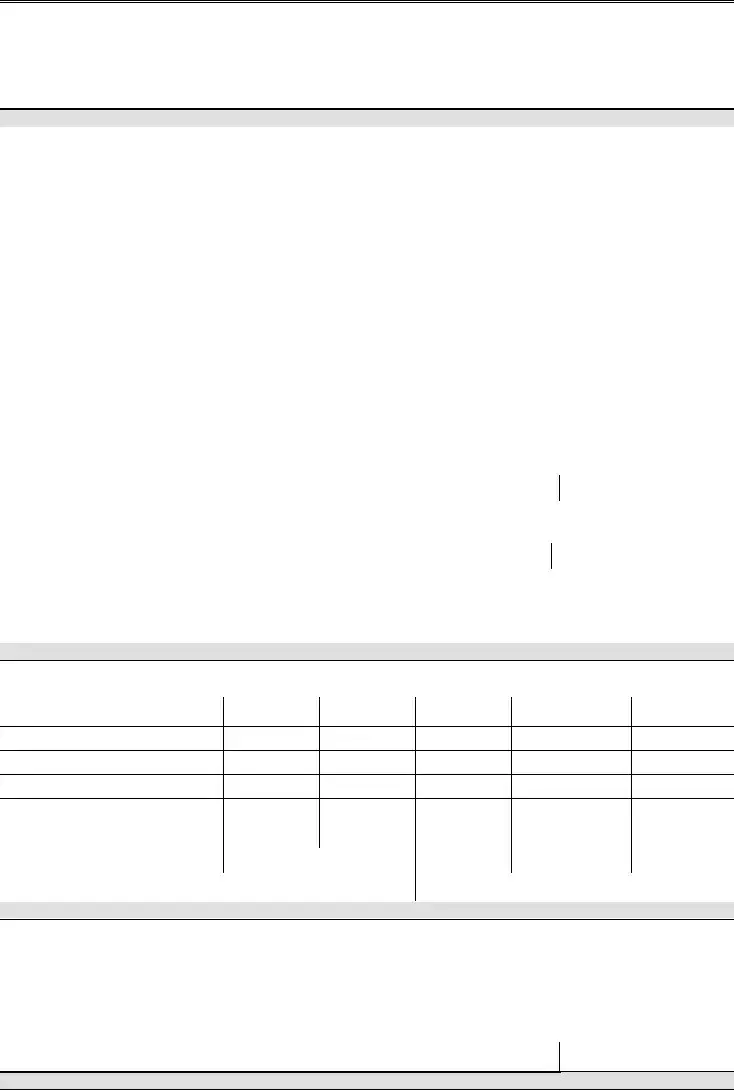The Mortgage Loan Application form is quite similar to the Personal Loan Application form in its structure and purpose. While both forms are designed to evaluate the borrower's financial standing, a Mortgage Loan Application specifically focuses on obtaining a loan to purchase real estate. It requires detailed information about the property in question, including its value and location, akin to how the Personal Loan Application requests collateral details. The emphasis on income, employment history, and current liabilities exists in both forms to assess the applicant's repayment capacity.
A Credit Card Application form also shares many similarities with the Personal Loan Application form, especially in the aspects of evaluating creditworthiness. It gathers comprehensive personal and financial data from the applicant, including income, current debts, and employment information. However, unlike personal loans that might be secured against collateral, credit card applications often rely on unsecured credit, focusing heavily on credit history and scores to determine eligibility and credit limits.
An Auto Loan Application form is another document that mirrors the structure of the Personal Loan Application. It specifically caters to individuals seeking finance to purchase a vehicle. Similar to the personal loan application, it requires the applicant to detail their financial status, including income, assets, and liabilities. However, it goes further to include specific information about the vehicle, such as make, model, and year, serving as collateral for the loan.
The Business Loan Application form, while designed for a business rather than an individual's financial needs, parallels the Personal Loan Application in its thorough examination of financial health. It delves into the business's finances, including revenue, expenses, and existing debts, akin to how personal loan applications assess individual income and liabilities. Additionally, it requires information about the business owners, which can be compared to the section detailing the applicant's personal information in a personal loan application.
A Student Loan Application form, intended to offer financial assistance for educational purposes, similarly requires detailed personal and financial information from the applicant. Like personal loan applications, it assesses the borrower's capacity to repay the loan, focusing on aspects such as income sources and existing debts. However, it uniquely considers potential future earnings based on the applicant's field of study and the cost of the educational program being financed.
The Rental Application form, although primarily used for securing rental housing and not a loan, demands extensive personal and financial information from the applicant akin to a Personal Loan Application. It evaluates the applicant’s ability to fulfill financial commitments by examining income, employment, and credit history. Additionally, like joint or co-applicant details in loan applications, rental applications often require information about other occupants or guarantors to ensure financial stability.

